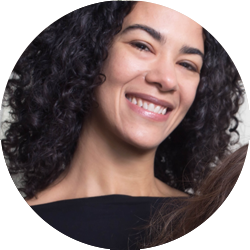Ever made a New Year’s resolution that didn’t stick?
Consider this: Sometimes we think we want something. But we don’t realize we have a conflicting need that overrides it.
Before I wrote Zero to Five: 70 Essential Parenting Tips Based on Science, for example, you would not find me speaking in public. No sirree. You would rarely even find me speaking up in a meeting at work, if I didn’t feel 100% confident in my opinion. At the time, I wished that weren’t so. I knew it wasn’t great for my career. I forced myself to take workshops on public speaking. But I didn’t really change.
I thought I wanted to be able to speak in public. But I didn’t realize then that I had a deeper, more important, and conflicting need: to look smart and competent, to not say something dumb, to not mess up. My fixed mindset won.
(Bonus download: What to say in place of praise.)
In the moment when I wanted to open my mouth, anxiety made sure it stayed closed.
These days, I am speaking in front of more than a hundred people. I actually gave one talk without my notes. Yes. I know. It’s a shocking transformation. And it never would have happened without getting to where the block really was.
What goals have you had for longer than you’d like to admit?
If so, it’s possible that something related to them actually makes you seriously uncomfortable.
Your body will tell you if that’s true. See if this works: Attempt to do the thing you want, or spend several minutes imagining yourself doing the thing you want. Then pay attention, in that moment, to what is happening in your body. What sensations filter through your body? Tense shoulders? Sweaty palms? Tightness in your throat? Nervous smiles?
Most of us are out of touch with the sensations of our bodies. We need to create a quiet moment in which to concentrate. We need to practice noticing. But if we do, we will gain some very useful information about ourselves.
What to do with the sensations in the moment:
- Keep noticing them. Stay with them. Let them happen.
- Get curious, not critical, about them. “Huh. My fingers are fidgeting right now.” “I notice that I’m starting to sweat a little.” “How interesting that I do this.”
- Check in with your desire. Do you want this thing? Is it important to you?
- Allow the conflict to exist. It just is. “I am aware of this sweaty feeling and my desire for this thing.” “I can have both feelings in my body at the same time.”
As you practice, you are strengthening your awareness. And your ability to be curious about yourself without judgment. Some people practice for a few minutes every day by doing a mindfulness meditation.
When you’re not aware of the signals your body is sending you, anxiety or fear will automatically steer you to safety. Your decisions, in a way, will be made for you. When you’re familiar with what various emotions feel like in your body, you can recognize them in the moment and acknowledge them. And then make your own decision about what to do next. The anxiety or fear is still there, but it is no longer in control.
You can be who you want to be.
(Bonus download: What to say in place of praise)
Written by
Tracy Cutchlow
Tracy is the author of the international bestseller Zero to Five: 70 Essential Parenting Tips Based on Science, a public speaker, and a creator of places to speak and be heard. Sign up for her newsletter here.
